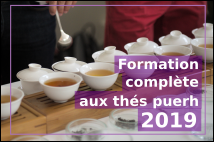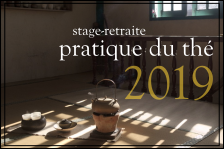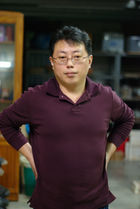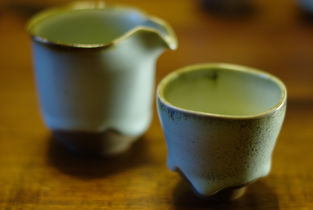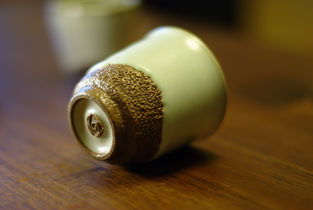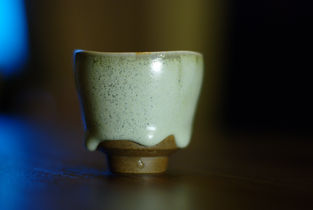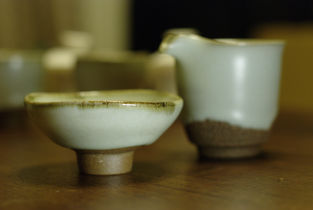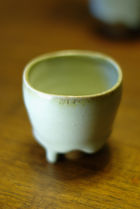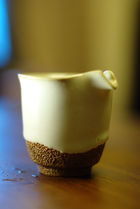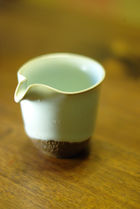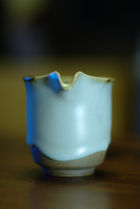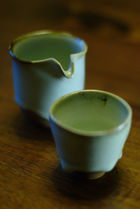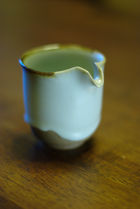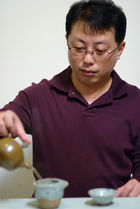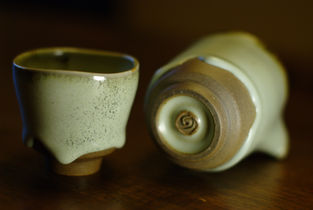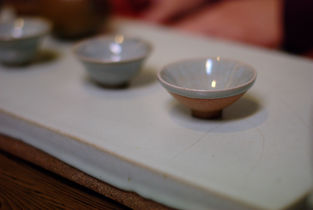 This page is not a real translation but just an automatic translation generated by computer of the original article, written in French language! Its not good... but better than nothing!
This page is not a real translation but just an automatic translation generated by computer of the original article, written in French language! Its not good... but better than nothing!Want to help us do diffuse puerh tea culture in english, by providing a better (or corrected) translation?
Please contact us!

Found in Taiwan traces of pottery dating back almost 4000 years. But it is in the last few hundred years that the Taiwanese pottery experienced a boom particular, especially in Nantou County. Nantou is a region in central Taiwan, characterized by the fact that it is the only region of the island not to touch the sea Known primarily for its teas, the region is the largest producing region of wulong and nearly half of Taiwanese wulong comes from Nantou. But the region is also renowned for its excellent wulong altitude, especially from the famous mountains of Shan Dong Ding or Lin Shi. Less known than these wulongs, the region also has a culture of pottery that dates back over 200 years.




- 1. Shan lin shi Nantou
- 2. Gardens of wulong altitude in Nantou
- 3. Bamboo Forest in Nantou
- 4. Shan lin shi Nantou
If Nantou pottery and draws its origins to the late 18th century, the 20th century pottery in the region truly emerges, especially in the wake of efforts and Yano Takesi Shigemichi Koyanagi, and the potter who Kameoka Yasutaro until 1907 will be the guardian of Nantou Pottery School founded in Nuyunchue. Nantou will thus emerge in the 20th century many potteries, especially from the 20s, such as Hsinkao, Hsin Hsieh, Yucheng, Hsiehte, Chin Yi-cheng, Nanhe, Hehsin, Lao Cheng-fa, Rong Tong, Tongyang, etc. ...
Besides the specific culture in Taiwan, Nantou pottery is also interesting by its rich influences, including Japanese. Indeed, Taiwan was under Japanese control from 1895 to 1945, leaving a strong Japanese influence on Taiwanese culture and the arts, including pottery. The potter Liu An-chang and will travel to Japan in 1925, encouraged by Kameoka Yasutaro to learn the techniques of pottery.


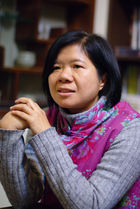
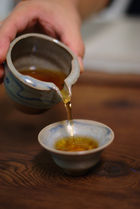
- 1. Lin Jianhong
- 2. Room Lin Jianhong (detail)
- 3. The wife of Lin Jianhong, originally a passion
- 4. Parts of Lin Jianhong
Lin Jianhong (林建宏), discreet and passionate young potter from the area of Lugu in Nantou, near Shan Lin Shi is one of the heir to this history of Taiwanese pottery. Born in 1969 Lin Jianhong begins to study mechanical engineering. He discovered pottery to his wife who taught him the basics of pottery. Fascinated by this discovery, he abandoned the world of machines for land and over time will develop its own style.
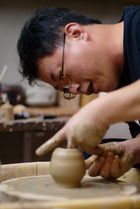
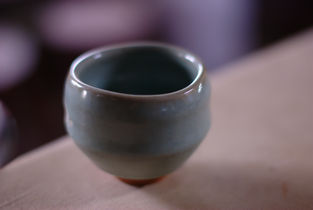
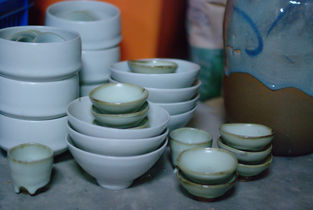
- 1. Lin Jianhong in his studio
- 2. Mug by Lin Jianhong
- 3. Parts freshly cooked in the studio of Lin Jianhong
He will participate in various exhibitions and competitions and pottery during the last 10 years. But Lin Jianhong is primarily a simple man, a humble and passionate craftsman who turns slightly forward and, from his small workshop in Lugu focuses on working the land. Far from the major studios of potters known in Taiwan, which employ many potters, Lin Jianhong works alone and in person shapes each of his creations, each of which carries the action of the potter. They do not directly sell its parts, has no shop but works on demand, limited edition for some excellent shopping. Its order book is continuously filled for several months, and Lin Jianhong lives his life as a potter with a sort of meditative routine.
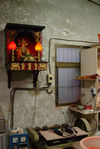
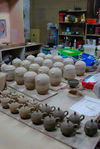
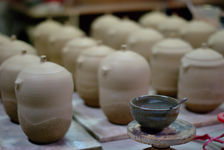
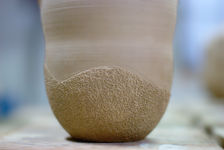
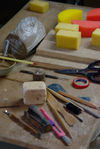
- 1. Workshop Lin Jianhong
- 2. Parts being in the studio of Lin Jianhong
- 4. Parts being in the studio Lin Jianhong
- 5. Parts being in the studio of Lin Jianhong
When asked about his daily potter Lin Jianhong evokes the passage of discovery and learning of the technique with that of living off the land: Beyond the creation and testing it there's the act of production and reproduction, repetition, movement, life from the earth. For Lin Jianhong pottery is ultimately not so different from what he studied: mechanical engineering. Pottery is primarily for him a matter of production and requires accuracy and application. The creation of Lin Jianhong beings are far from fixed or devoid of freedom and each is inhabited by touching a life. Although in fact each piece produced is strictly compliant asked by the creator, they are all unique, modern look and offer as much on the same distinct creation. In addition to this internal life to each piece, the work of Lin Jianhong is characterized by its simplicity: simple shapes, balanced and harmonious tea service.
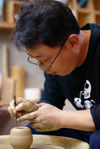
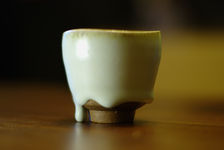
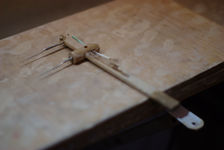
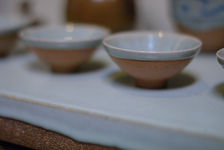
- 1. Lin Jianhong at work
- 2. Mug by Lin Jianhong
- 3. Tool in the studio of Lin Jianhong
- 4. Cups and tea table by Lin Jianhong
His style and technique to borrow and different cultures. For Lin Jianhong, the question where does this or that technique does not really make sense now ... everyone has access to technology you this or that country, and somehow the technique can be the same for Tomorrow's can close the application from anywhere: A Yixing such a technique they have their own, but that can be learn and practice wherever you want. If he does not practice what is there first because it is not what attracts him, and because the land he used to use is not appropriate. Lin Jianhong uses and for half the land of Taiwan, and imports the other half of Japan, as often mixing the two. There are also lines in Japan's influence, and this may be where it is the soul of pottery Taiwansaise: between the influences of ancient China, Japan and Taiwan.
Lin Jianhong creations are of great sensitivity. With simple lines and sober in the image of their creator, they play with balance and discretion of the irregularity, the accident, the trace of matter, gesture and fire. If lorqu'on sees such a series of cups in the workshop they seem at first glance similar, we see the use of the uniqueness that each of them, one character at abitue subtle of a particular cup against her twin sister, the uniqueness of its forms, in particular contact, his soul. It is also to use, and the interaction between land and tea that we realize, beyond the visual balance of forms, true wealth creations of Lin Jianhong.
We are the first places charmed with the way her cups magnify the color of tea liquor, how they seem to reflect light in a particular way, how they are living on tea, give it a new depth and brightness. We greatly appreciate then touch, velvety cups, how they kiss and caressed the lips. We naturally feel an influence on the flavors of teas that pass through these parts, which seem to acquire a soul and a particular round.
Note also the use of the perfect execution of more complex parts as the pitcher. Relegated by some to the rank of a simple cup of reserves, the realization of a true pitcher in the state of the art is work that requires great skill. In addition to its aesthetic quality is a good pitcher indeed allow a perfect flow of the liquor, continuous and frank, and easily controllable by the person using both the flow of the judgment which must be clear, specific and immediate. If a number of potters do not care about war Lin Jianhong, can be passed in its mechanical design, makes a point of honor in the quality of his pitcher, and carefully monitoring their effectiveness. It is for him, and despite the simplicity of their form one of the most complex pieces he is, and therefore the more valuable pieces, which explains the particularly high prices for pitchers Lin Jianhong. The different models it produces pitchers are also not the same, some being more suited to such a slow payment, on the other faster, more even more versatile.
Lin Jianhong is undoubtedly a young potter from Nantou particularly talented, interesting to follow today and over time. With fifteen years of experience he has managed to overcome the technical gradually draw his own style, simple, sober and clean in the image of the man behind.

